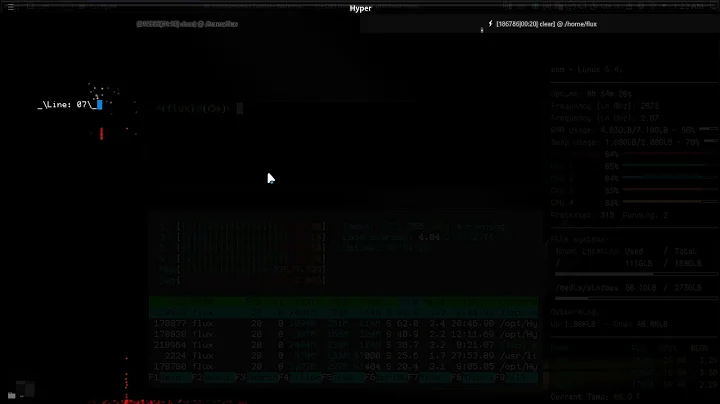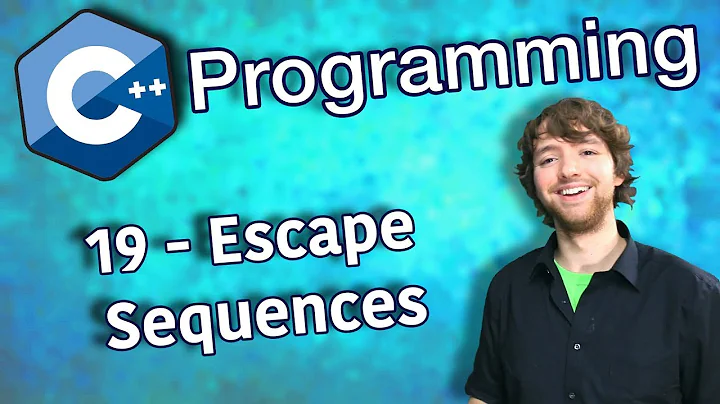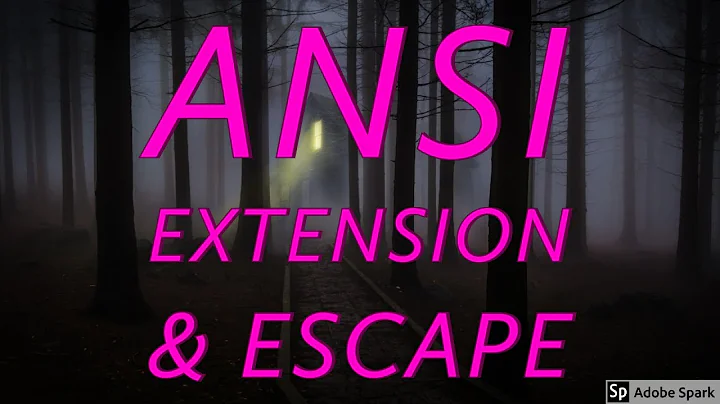What does [?1049h and [?1h ANSI escape sequences do?
Solution 1
\u001B is an unnecessarily verbose ASCII escape character, which seems to have been introduced for ECMAScript6. POSIX would use octal \033, and some others allow hexadecimal \01b. The upper/lower case of the number is irrelevant.
The \u001B[?1049h (and \u001B[?1049l) are escape sequences which tell xterm to optionally switch to and from the alternate screen.
The question mark shows that it is "private use" (a category set aside for implementation-specific features in the standard). About a third of the private-use modes listed in XTerm Control Sequences correspond to one of DEC's (those have a mnemonic such as
DECCKMin their descriptions). The others are either original to xterm, or adapted from other terminals, as noted.The reason for this escape sequence is to provide a terminfo-based way to let users decide whether programs can use the alternate screen. According to the xterm manual:
titeInhibit(classTiteInhibit)
Specifies whether or not xterm should removetiandtetermcap entries (used to switch between alternate screens on startup of many screen-oriented programs) from the TERMCAP string. If set, xterm also ignores the escape sequence to switch to the alternate screen. Xterm supports terminfo in a different way, supporting composite control sequences (also known as private modes)1047,1048and1049which have the same effect as the original47control sequence. The default for this resource is "false".
The 1049 code (introduced in 1998) is recognized by most terminal emulators which claim to be xterm-compatible, but most do not make the feature optional. So they don't really implement the feature.
On the other hand, \u001B[?1h did not originate with xterm, but (like \u001B=) is from DEC VT100s, used for switching the terminal to use application mode for cursor keys (DECCKM) and the numeric keypad (DECKPAM). These are used by programs such as less when initializing the terminal because terminal descriptions use application (or normal) mode escape sequences for special keys to match the initialization strings given in these terminal descriptions.
Further reading:
- Why doesn't the screen clear when running vi? (xterm FAQ)
- Why can't I use the cursor keys in (whatever) shell? (xterm FAQ)
- My cursor keys do not work (ncurses FAQ)
- XTerm Control Sequences
Solution 2
ESC[?1049h seems to be from the DEC Private Mode Set:
Save cursor as in DECSC and use Alternate Screen Buffer, clearing it first. (This may be disabled by the titeInhibit resource). This combines the effects of the 1 0 4 7 and 1 0 4 8 modes. Use this with terminfo-based applications rather than the 4 7 mode.
Note that CSI translates to ESC[.
Related videos on Youtube
Tim
My name is Jakub T. Jankiewicz, I'm coding mostly in JavaScript. I love Lisp Macros, jQuery library, ReactJS, CSS3, HTML5, SVG, GNU/Linux, GNU Emacs and Inkscape. Working with JavaScript and R for Roche/Genentech via Astek Poland. my english blog - In Code We Trust my polish blog - Głównie JavaScript (ang. Mostly JavaScript) Usefull Links Other links Yet another links Few of my JavaScript Open Source projects: jQuery Terminal: JavaScript library for Web based Terminal Emulator LIPS - Powerful Scheme based lisp interpreter written in JavaScript sysend.js: Library for sending messages between Windows and Tabs Gaiman Programming Language and Text based Game engine GIT Web Terminal Posts: EchoJS News, EchoJS News (2), HackerNews
Updated on September 18, 2022Comments
-
Tim over 1 year
When I used shell in a box and when I call less command (
echo foo | less) in ajax response there was this code:\u001B[?1049h\u001B[?1h\u001B=\rfoo\r\n\u001B[7m(END)\u001B[27m\u001B[Kwhat does
\u001B[?1049hand\u001B[?1hescape sequences do, also what is\u001B=? Are they documented somewhere?-
 Admin almost 8 years
Admin almost 8 years
-
-
penguin359 over 7 yearsActually, it's normally \x1b for hexademical escape, not \01b as the leading 0 normally implies octal.
-
Marius over 7 yearsThe question was about ECMAscript, which does not use octal (and the
\uescape is supposed to be distinct).





